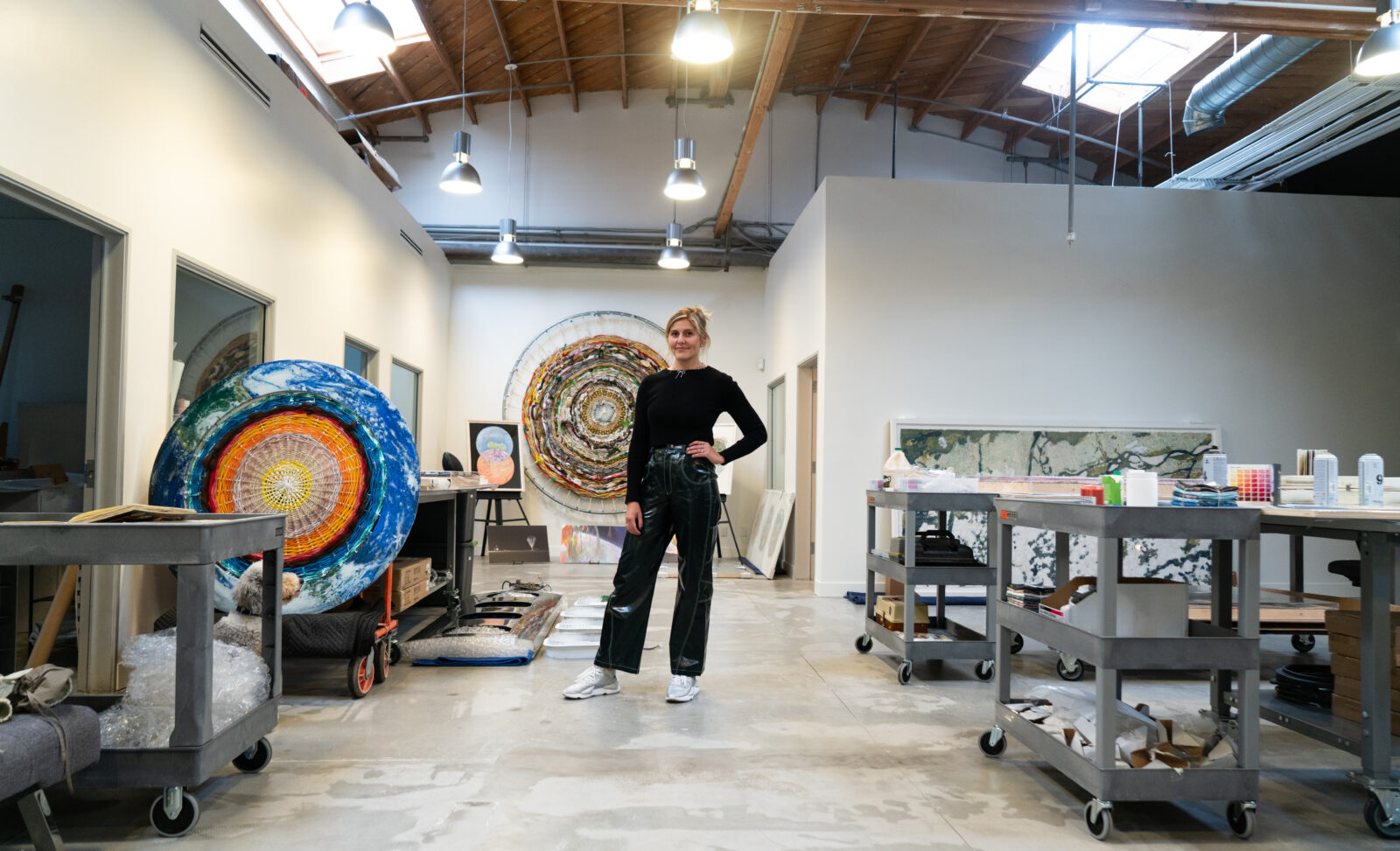Biography
Richelle Ellis is an expeditionary artist, curator, and analog astronaut. Her art and research aims to use space to help life on Earth, to see the world – and ourselves – in new ways. Richelle creates artworks made for international orbit, etched on satellites, suspended by Stratollite balloons and aboard rockets. Her work spans exhibitions from the Museum of Contemporary Art Tokyo to the Smithsonian National Air and Space Museum, with recent artworks on the surface of the Moon.
As Head of Creative Research for analog space missions via Hawaii Space Exploration Analog and Simulation (HI-SEAS), Sensoria Program, Lunares Research Station, and Astroland Interplanetary Agency, Ellis examines creativity beyond our world. Richelle’s artistic ventures have taken her to glaciers near the North Pole to parabolic flights in zero gravity, into the Biosphere 2 and Analog Mars Missions with NASA Goddard, earning her accolades and residencies at renowned institutions such as Planet, Google Quantum AI, Relativity and the Karman Project.
Richelle is the Co-founder of Inploration, a non-profit art initiative exploring the wonder of space to deepen our appreciation of the world we inhabit. Additionally, she is the Founding Director of Supercollider, a Los Angeles–based curatorial platform that unites artists, scientists, and the public through exhibitions, workshops, and fellowships designed to reimagine the future and address global challenges through the lens of art.
Artist Statement
I explore life at all levels of living systems—organisms, social structures, ecosystems, and planetary systems—to illuminate the interdependence and complexity that bind them. My work examines neural-like networks of connectivity, revealing intricate, interwoven patterns that span disciplines and scales. By visually interpreting these structural relationships, I create narratives that integrate the biological, social, and technological systems that shape our shared existence on Earth.
My artistic practice has evolved from comparative studies of networks—such as molecular structures, neural pathways, social systems, and urban infrastructure—to an in-depth exploration of their dynamic interactions. This journey has deepened my inquiry into how connectivity influences life, examining both its constructive potential and the challenges it presents to our collective future. Through this lens, my work seeks to inspire reflection on the transformative power of interconnectedness in shaping humanity and the planet.
Selected Press
-
Space2Sea PodcastCreativity in SpaceAugust 2025
-
The Lab MagDeep dive into Space with artist and astronaut Richelle EllisFebruary 2024
-
PBS News HourWhy Google transformed a quantum computing lab into an artistic oasisJanuary 2023
-
designboomjellyfish-like balloon installation is the first large-scale artwork to fly into spaceOctober 2022
